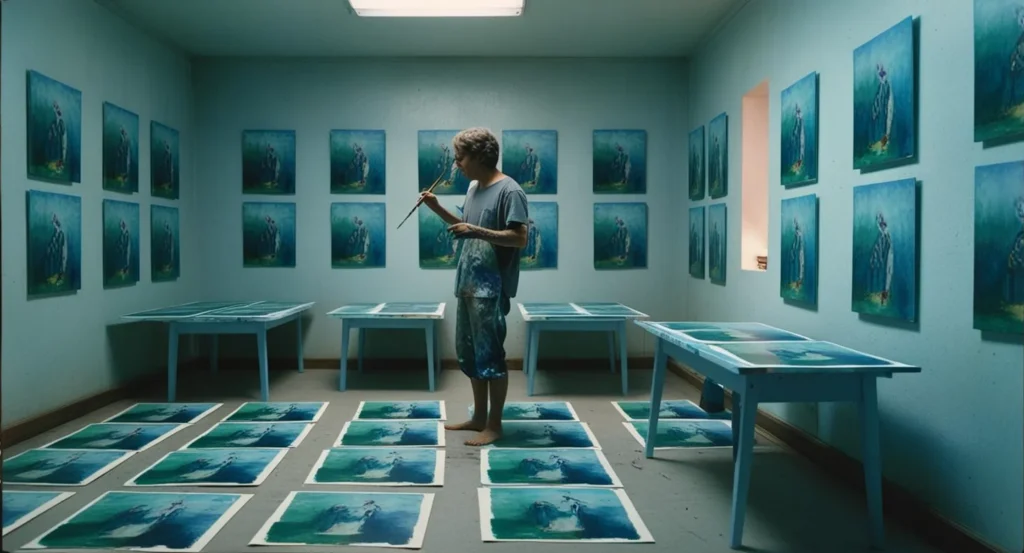Digital art, with its infinite reproducibility and weightless existence, stands as a rebellious child in the prim halls of the neoliberal art market. It dismantles the pillars of traditional art commerce — value, scarcity, and originality — like a mischievous algorithm rewriting an old, revered code. The very fabric of the market, built on the sanctity of the unique and the aura of the tangible, is unraveled by art that can be cloned perfectly, shared infinitely, and exist solely as data. Faced with this challenge, the market responds with ingenuity and desperation, crafting artificial scarcity and capitalizing on the qualities that threaten its core.
Artists navigating this terrain often weaponize these disruptions. By embracing the reproducibility of their medium, they reject the fetishization of the “one-of-a-kind.” Their works, sometimes endlessly replicable or designed to mutate with every viewer interaction, defy the market’s demand for exclusivity. Yet the market, ever resourceful, repackages this defiance. Blockchain technology, for example, is wielded like a digital alchemist, turning abundant into the scarce, creating NFTs that promise uniqueness in a realm where everything is inherently sharable. This paradoxical transformation is akin to bottling sunlight and selling it as a rare vintage.
The dematerialization of digital art — its existence as pure information — should have untethered it from the weight of commerce. But the neoliberal market, like a magician with a new trick, transforms this weightlessness into yet another asset class. The very absence of a physical form becomes its allure, with value anchored not in the art but in the spectacle of its transaction. Meanwhile, artists are recast as entrepreneurs, their creative output measured less by its cultural resonance and more by its ability to generate clicks, shares, and bids. They are both creator and product, navigating a landscape where the line between artistic expression and market strategy blurs into oblivion.
Ultimately, the neoliberal art market seeks to domesticate the unruly nature of digital art, taming its boundless potential into a manageable commodity. Yet, in its resistance, digital art continues to expose the absurdities of a system that thrives on paradox: celebrating creativity while commodifying it, and claiming innovation while clinging to archaic hierarchies of value. The battle between art’s infinite possibilities and the market’s finite structures persists in a tension that fuels both innovation and critique in equal measure.
Victor T. Murari
Art History, Education & Artificial Intelligence | PhD | Advancing Educational and Cultural Narratives through AI Integration

